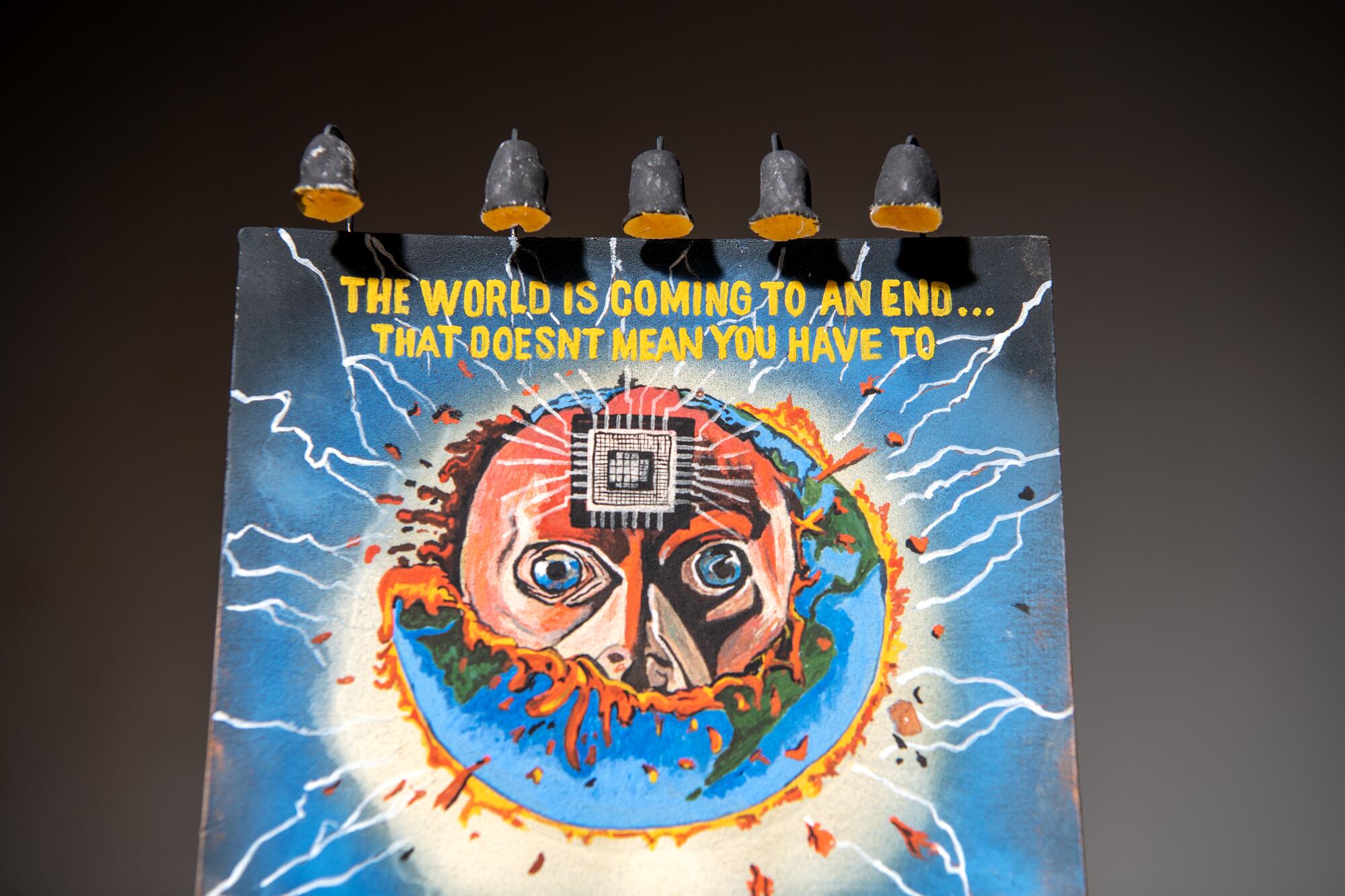
- Share via
From the questions posed on consecutive billboards in the mountains to the Gospel preached by the person on a soapbox near the sea, the warnings are everywhere: The clock is ticking, and it has been for quite some time. “The end is here! Are you ready for it?” What comes next is inseparable from what to do about it. Call and responses are baked into the form like a soufflé. Many check check check the temperature, again and again, for the end of history. What happens if we wait too long for things to pop? Look around. It’s a slow burn.
The tradition of speculation is a narrative project. All great epics grow from a real source: truth. The sage sees things as they really are while holding open space for a future — a reality — that’s just beyond the edge of perception. But where one transmits from impacts the POV. Projection always begins somewhere.
In Los Angeles, the story of the end stays top of mind — and not just because of our ancestors like Mike Davis and Octavia Butler. Here, Angelenos audience test the next season of the end of the world every day — from the drama of the unprotected left to the dark comedy of getting dressed up to stave off the ankle biters. The city is an advertisement for its own dystopian future.
To that effect, the end of the world needs someone with enough foresight to set the reminder. All great prophecies need a storyteller; someone must spread the word, sound the alarm. For this project, we asked five artists — Edmund Arévalo, Eve Fowler, Alfonso Gonzalez Jr., Christopher Suarez and Megan Whitmarsh — to create posters with the end in mind. Each interpreted the world’s end in their own way. Remarkably, the future looks a lot like the iconography of the moment. “I wanted this piece to address the current times of this world we are living in,” Arévalo says of his piece “Wat chu watchin?!”
The present might feel like a grand finale. But the great reveal is that it’s only the penultimate scene. The prophet reminds us there is a future. Artists, Whitmarsh notes, are here “to envision and prepare.”
— Ian F. Blair, Image editor in chief
Megan Whitmarsh
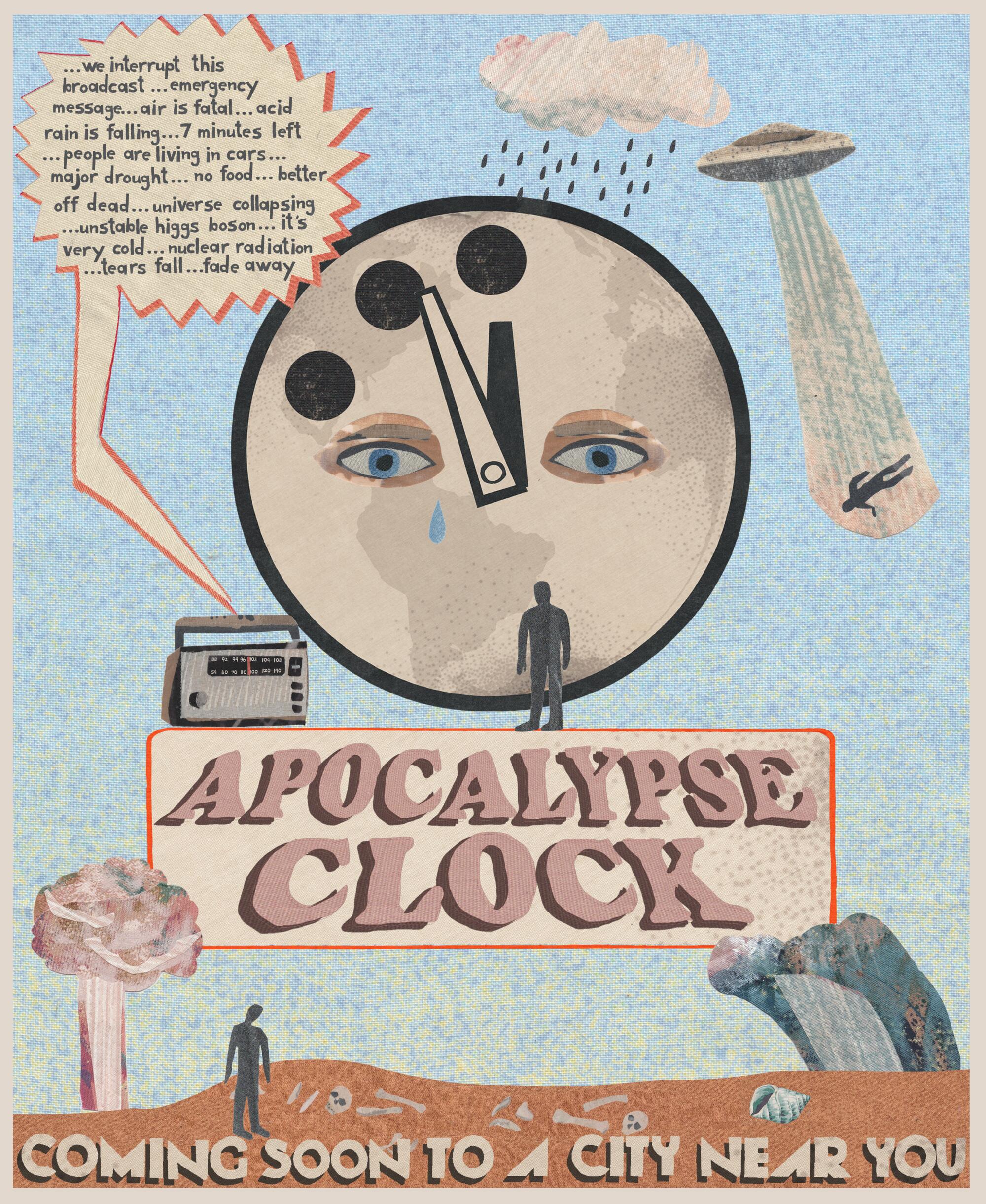
I’ve had apocalyptic dreams since I was in my 20s. Probably because my mom was a peace activist who went to jail protesting nuclear weapons and also because I saw “The Day After” when I was 11. Most of the dreams are terrifying and I wake up truly happy to be alive because I have just died or disintegrated in my dream, but occasionally they are ridiculous like one where I thought I found the last living animal in a dying desolate post-apocalypse world but it turned out to be Peter Criss, the Catman of KISS, and I was sad. I believe artists can be prescient in some ways — that we can see the future a bit even if we don’t know it. Maybe it is the job of artists to envision and prepare. Apocalypse means: to uncover.
Edmund Arévalo

I wanted this piece to address the current times of this world we are living in, and how, if we continue to move this way, many innocent lives like the child in this painting will have to suffer.
Alfonso Gonzalez Jr.
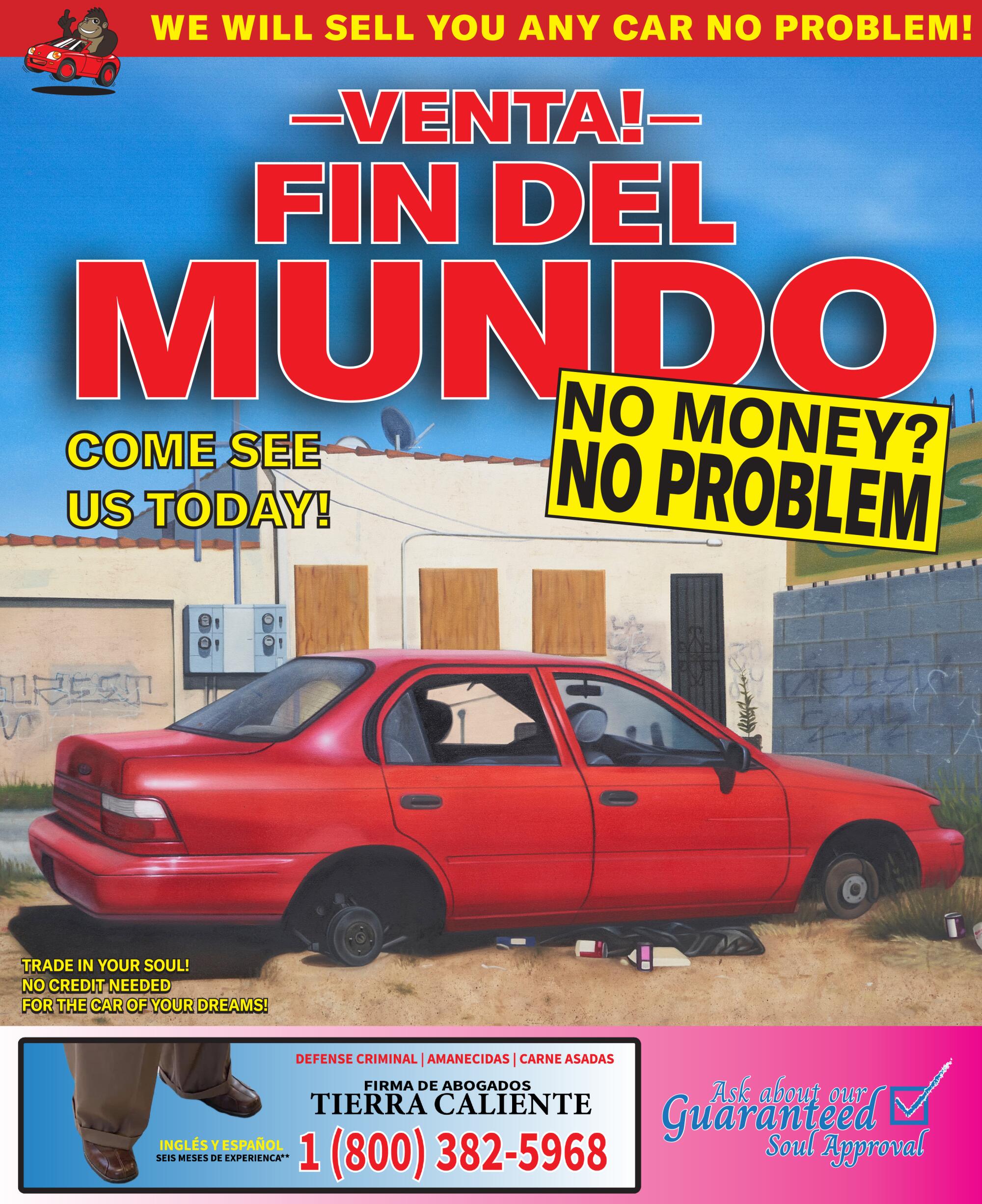
This fictitious advertisement juxtaposes a post-apocalyptic Los Angeles backdrop with a used car sale concept, offering a whimsical perspective on the idea of an end-of-the-world scenario. The presentation channels the style of kitschy advertisements, akin to the free penny savers found in Spanish in Latino stores. Below the car advertisement, you’ll find another ad for legal services that playfully introduces a twist by using an image commonly referenced in memes and party services.
Christopher Suarez
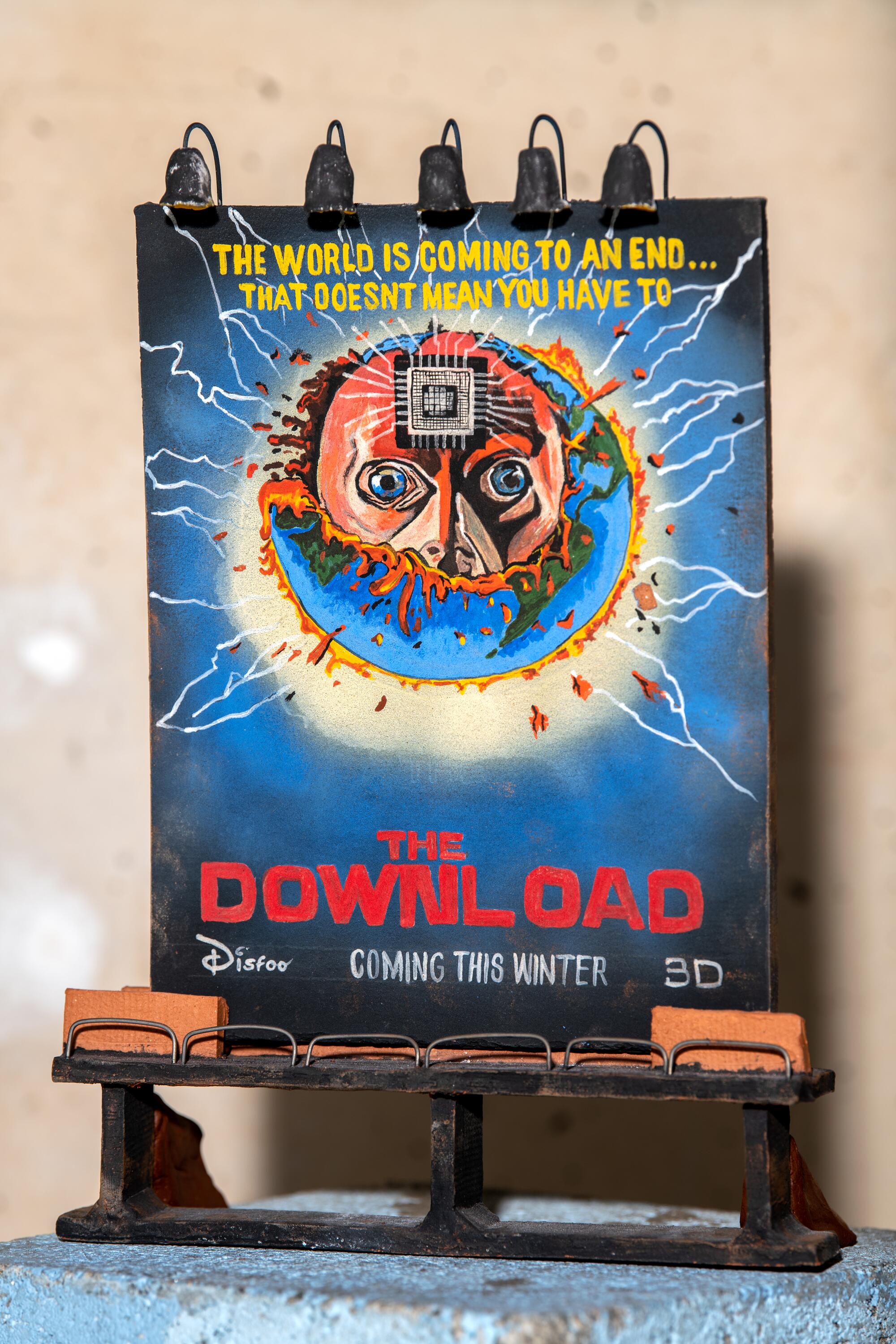
“The Download” is a ceramic billboard from the near future advertising an upcoming film about our demise: The time has come. Society has accepted the fate of the planet. It isn’t a zombie apocalypse or an alien takeover that ends the world, but our very own arrogance. Based on Charles Bands’ 1977 movie poster “End of the World,” this billboard reveals the repercussions of consciousness downloading.
Eve Fowler
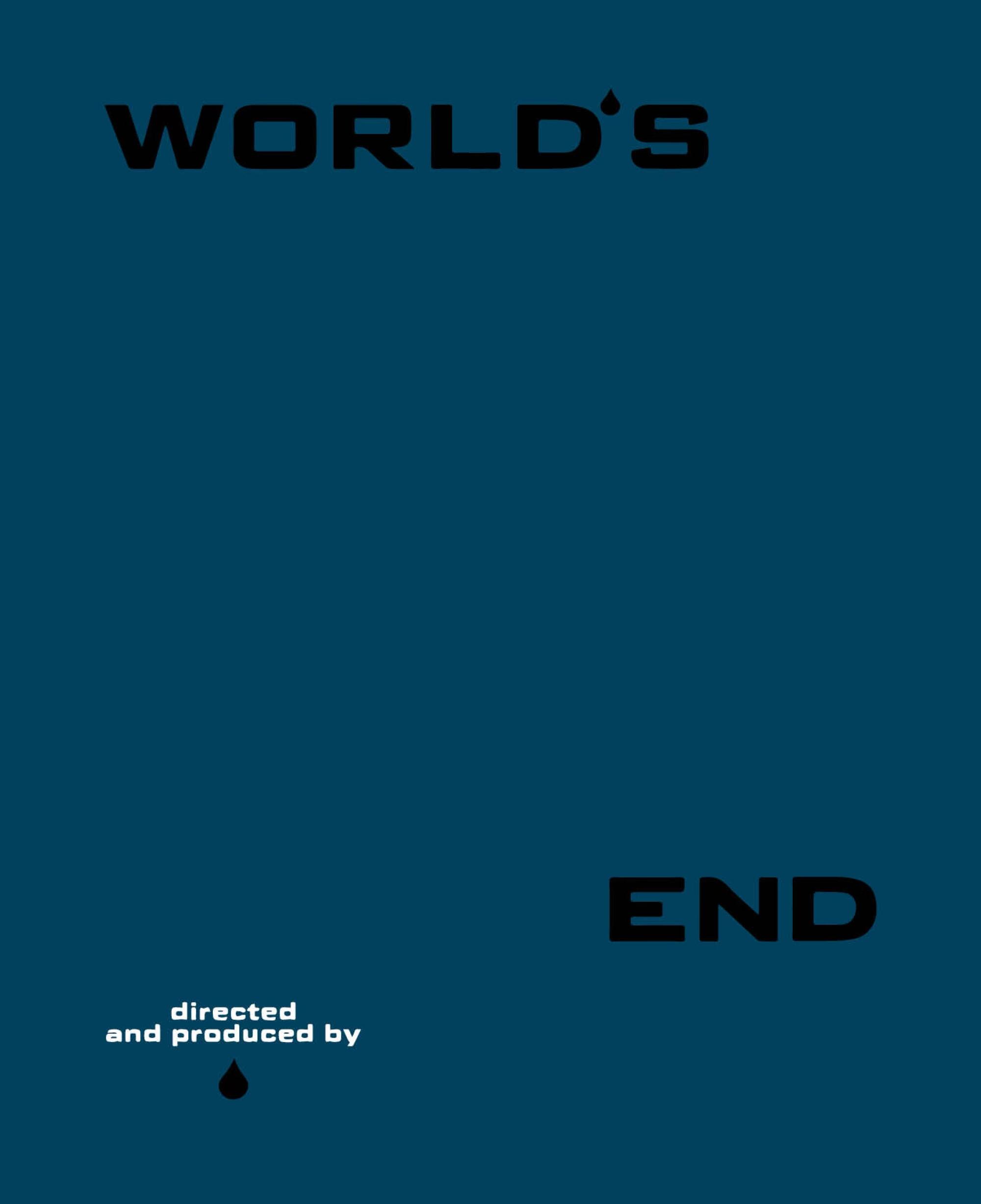
This is titled “World’s End.” The poster is loosely based on vintage film posters from the early 1970s. The drop could be a drop of oil or a teardrop. It is open to interpretation.




